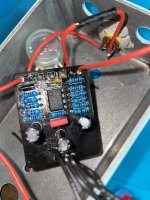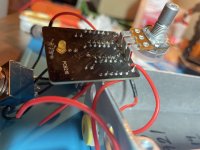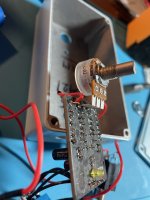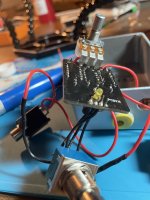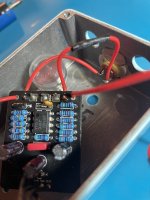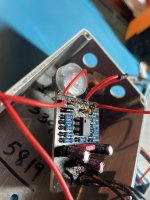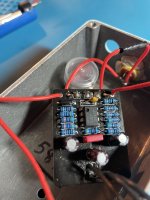Link to Black Tiger Boost schems :
I didn't check the whole thread, but i see there are some doubts about the power supply readings.
Is this the one ?

In this case, there is no way it reads 23V, and you won't find any switch, this power supply can only provide 9V DC.
I have 2 or 3 of those, and they always read 9.45V or so.
23.5 what ? is there a V symbol for Volts?
You need to set your meter on DC voltage reading (Direct Current and not Alternative current), black probe on ground (any ground point in the circuit), red probe on pcb 9V+.
DC current symbol on your meter :

I also understood there are some doubts about a fried 4558 ? They are quite sturdy, and usually don't get overheated easily.
Chris is right (about this topic), i totally agree with reply #5.
If you have an other gain effect, you could try it with this chip, see if it works or not. 4558 are compatible replacement for most dual op-amps, like TL072, etc. which are often found in various guitar effects.
They are quite cheap and very common, so you can also get a new one to avoid any doubts about it.
Edit : i just noticed that the 4558 isn't socketed. It could be tricky to unsolder it. I would check carefully the rest of the circuit before removing this chip.
I'd suggest to shorten these legs, to avoid any short with the enclosure. Looks like they are just as high as the status led :

If i may, i'd say that your soldering technique is quite interesting, i can see some beautiful shapes, but these soldering pads are somewhat irregular. Looks like a few pads, located toward the middle of the pcb, are maybe a little bit light on the solder ?
You could also clean the tiny spaces between pads with your Soldering Iron (moving quickly), to avoid shorts.
On a side note, it looks like the Led is stuck to the board. It might be hard to make it fit in your Plastic Led Mounting Clip ?


